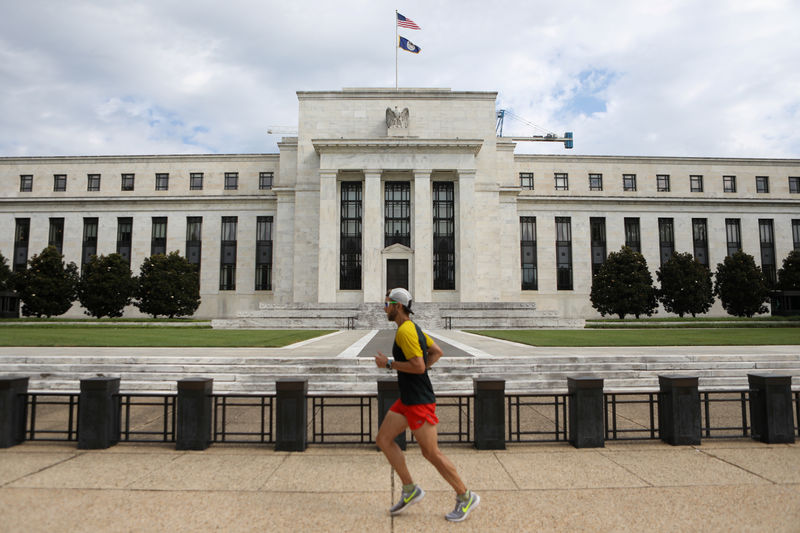
© Reuters.
By Yasin Ebrahim
Investing.com – The trio of troubles including supply chain disruptions, labor market shortages and the impact of the Delta variant of Covid-19 has led to a slowdown in the economy, according to the Federal Reserve’s Beige Book released Wednesday.
Economic activity grew at a modest to moderate rate, according to the majority of Federal Reserve Districts. Several Districts noted, however, that the pace of growth slowed this period, constrained by supply chain disruptions, labor shortages, and uncertainty around the pandemic, the Fed said in its Beige Book economic report, based on anecdotal information collected by the Fed’s 12 reserve banks through Oct. 8.
There was little sign that rising input costs were abating. “Most Districts reported significantly elevated prices, fueled by rising demand for goods and raw materials,” the report said. Still, firms were able to offset the ramp-up in cost somewhat, by hiking selling prices.
“Many firms raised selling prices indicating a greater ability to pass along cost increases to customers amid strong demand. Expectations for future price growth varied with some expecting prices to remain high or increase further while others expected prices to moderate over the next 12 months,” according to report.
The dearth of labor, meanwhile, continued to hold back growth, with firms forced to raise wages. “Firms reported increasing starting wages to attract talent and increasing wages for existing workers to retain them.”
While the supply-chain bottlenecks are likely to fade and help steady the explosive pace of inflation, a sustained increase in wages will challenge the Federal Reserve’s current view that inflation is transitory.
“The higher pace of inflation, driven by energy shortages, and supply chain disruptions is transitory, but the wage price spiral is the real risk,” Zhiwei Ren, Managing Director and Portfolio Manager, at Penn Mutual Asset Management told Investing.com in an interview on Wednesday.
The Fed has previously mentioned that wage inflation is expected to steady as the end of enhanced unemployment benefits and easing fears of the virus impact will encourage more people to enter the labor, boosting the labor participation rate.
But new employees entering the labor market, who are feeling the pinch from inflation, are likely to demand higher wages, potentially leading to more persistent price pressures.
“The labour market is so tight right now, and consumers are spending more money on goods like groceries that when they look for jobs, they may demand higher wages,” Ren said.
While the outlook on the economy was mostly positive, the ongoing inflation and supply-chain disruptions had soured sentiment in some districts.
“Outlooks for near-term economic activity remained positive, overall, but some Districts noted increased uncertainty and more cautious optimism than in previous months,” according to the Beige Book.
The report also highlighted that the “majority of Districts indicated positive growth in consumer spending.” This strength will prove important in staving off any prospect of a recession.
“Demand is extremely strong,” Ren added. “This momentum is going to be able to support the economy for the next 12 to 18 months. There is zero risk of a recession in the next 18 months.”
Source: Investing.com




























